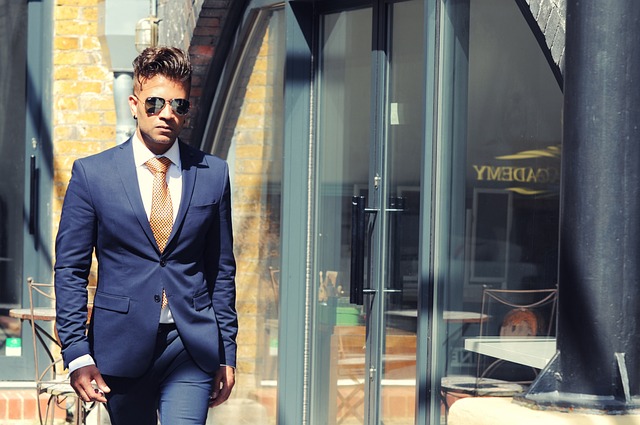When it comes to dressing sharp, nothing beats the timeless appeal of a well-fitted suit. Whether you’re heading to a job interview, a wedding, or a casual outing, the right suit can make all the difference. But with so many options out there, how do you choose the perfect suit for any occasion? Aside from this, you can preserve a suite for much longer, so it’s essential to invest in one that will stand the test of time and adapt to various events.
Understanding the Basics: Types of Suits
Before diving into specifics, it’s essential to understand the basic types of suits available:
- Business Suits are typically more conservative in style and color and suitable for professional settings. Think navy, black, or grey suits paired with a crisp dress shirt and tie.
- Casual Suits: Perfect for less formal events, casual suits often come in lighter colors and relaxed fabrics like cotton or linen. They can be worn with or without a tie.
- Formal Suits: Also known as tuxedos, these suits are reserved for black-tie events. They usually feature satin lapels and are paired with a bow tie.
- Seasonal Suits: Depending on the time of year, you might opt for a wool suit in winter or a linen suit in summer to stay comfortable and stylish.
Finding the Right Fit
A suit that fits well can enhance your appearance and boost your confidence. Here’s how to ensure a perfect fit:
- Shoulders: The jacket should hug your shoulders without being too tight or loose. The seam should align perfectly with your shoulder’s edge.
- Chest and Waist: You should be able to button the jacket without strain, but it shouldn’t be so loose that it creates excess fabric folds.
- Jacket Length: The bottom of the jacket should cover your buttocks and fall just below your hips. When standing straight, your knuckles should align with the bottom of the jacket.
- Sleeve Length: The jacket sleeves should end at your wrist bone, allowing about half an inch of your dress shirt cuff to show.
- Trouser Fit: Trousers should sit comfortably at your waist without needing a belt to stay up. The length should break slightly on your shoes, creating a slight crease.
Choosing the Right Fabric
The fabric of your suit can greatly affect its appearance and comfort. Here are some popular options:
- Wool: Versatile and durable, wool suits are ideal for year-round wear. They offer a good balance of breathability and insulation.
- Cotton: Perfect for warmer weather, cotton suits are lightweight and breathable. They provide a more relaxed look, making them suitable for casual occasions.
- Linen: Extremely breathable and light linen suits are great for summer. However, they wrinkle easily, which can give them a more casual, laid-back appearance.
- Synthetic Blends: These can be more affordable and wrinkle-resistant, but they might not offer the same level of comfort and breathability as natural fabrics.
Selecting the Right Color and Pattern
Color and pattern play a crucial role in defining the suit’s suitability for different occasions:
- Solid Colors: Navy, black, and grey are classic choices for business and formal settings. They are versatile and can be paired with a variety of shirts and ties.
- Patterns: Stripes, checks, and plaids can add a touch of personality to your suit. However, they are generally better suited for less formal occasions.
- Bold Colors: Suits in colors like burgundy, green, or pastel shades can make a statement at casual events but might be too bold for professional settings.
In Conclusion
 Choosing the perfect men’s suit for any occasion doesn’t have to be daunting. By understanding the basics, finding the right fit, selecting the appropriate fabric and color, accessorizing smartly, and maintaining your suit properly, you can ensure you always look your best. Whether you’re attending a business meeting, a casual gathering, or a formal event, a well-chosen suit will help you make a lasting impression.…
Choosing the perfect men’s suit for any occasion doesn’t have to be daunting. By understanding the basics, finding the right fit, selecting the appropriate fabric and color, accessorizing smartly, and maintaining your suit properly, you can ensure you always look your best. Whether you’re attending a business meeting, a casual gathering, or a formal event, a well-chosen suit will help you make a lasting impression.…





 If you have a receding hairline, the brushed-back haircut will be your best friend. It is perfect for men who want to keep their natural shape and look stylish at the same time. The keys to this haircut are to ensure that the hair on top is longer than the sides and back. The excess length should be combed back away from your forehead, giving a neat and tidy look. This cut looks great with any facial hair, so you can style it however you prefer. A pomade or wax will help keep the hair style in place.
If you have a receding hairline, the brushed-back haircut will be your best friend. It is perfect for men who want to keep their natural shape and look stylish at the same time. The keys to this haircut are to ensure that the hair on top is longer than the sides and back. The excess length should be combed back away from your forehead, giving a neat and tidy look. This cut looks great with any facial hair, so you can style it however you prefer. A pomade or wax will help keep the hair style in place. The buzz cut is the perfect option for you if you have really thinning hair or completely bald patches in your hairline. It doesn’t require much styling and can easily be done at home with a pair of clippers. Plus, it’s super cool and modern looking. It works great with any facial hair style, whether you’re rocking a 5 o’clock shadow or a full beard. So if you want to keep things low maintenance while still looking stylish, the buzz cut is definitely your best bet.
The buzz cut is the perfect option for you if you have really thinning hair or completely bald patches in your hairline. It doesn’t require much styling and can easily be done at home with a pair of clippers. Plus, it’s super cool and modern looking. It works great with any facial hair style, whether you’re rocking a 5 o’clock shadow or a full beard. So if you want to keep things low maintenance while still looking stylish, the buzz cut is definitely your best bet.